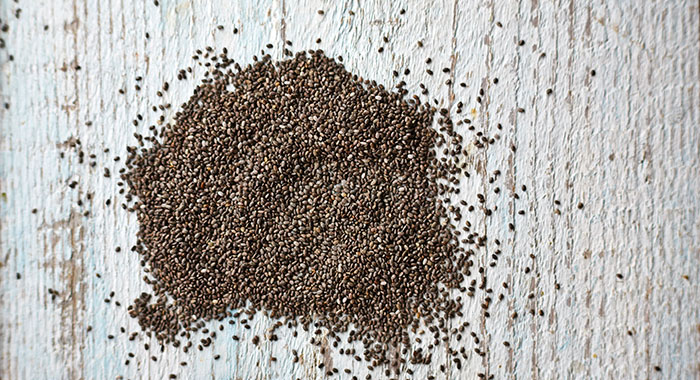
Pronounce it: chee-uh
An annual summer herbaceous plant and part of the mint family, this pseudo-grain consists of tiny dark, oval seeds that swell to nine times their original size when added to liquid or eaten. The Aztecs would devour the seeds with water as a pre-battle energy booster. The seeds are similar in size to poppy seeds, and have a black/ brown/ white mottled appearance. Eaten raw, the seeds are hard and crunchy and mild tasting. They have the highest plant content of omega-3 fatty acids, are also a good source of omega-6, calcium, iron, magnesium, phosphorus and potassium. They’re also high in protein, containing all the essential amino acids.
Read our guide on the health benefits of chia seeds.
Prepare it
Chia seeds can be eaten raw or used as a carrier for other foods, taking on a gel-like consistency when added to liquid.
Store it
Chia keeps best if stored in an airtight container in a cool, dark place. You can extend the shelf life by keeping it in the fridge.
Cook it
Chia seeds do not require cooking, but grinding or blending them improves absorption by the body. You can add them to salads, dips, sweet bakes and breads. You can also buy chia oil, which is mild in flavour, and ideal used in dressings. Do not use for cooking as the chia loses its nutritional benefits.
Alternatives
Try poppy seed.
Be the first to comment on "Chia"